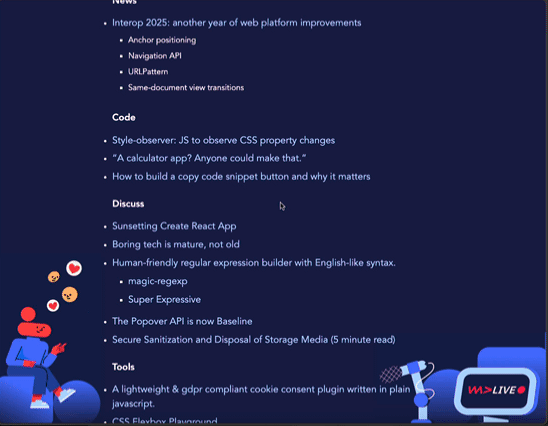Nobody should be a “content creator”
Wednesday, March 12th, 2025As part of my job, I have to keep up with the social media space and I’m worried, bored and annoyed in equal measures. There is not much social about it any longer. Instead it’s become a race to the bottom of lowest common denominator content. And interaction bait. Or rage bait. Or just obvious spam disguised in seemingly sophisticated sound bites generated by AI. I never thought I would miss listicles and “50 things you didn’t know about X – number 16 will surprise you” posts, but these at least were obvious.
Social media platforms don’t care about quality content – they cares about interactions
The problem is that social media has become a game of numbers much like SEO used to be. Posting because you learned something, found something interesting or created something has given way to feeding the machine for more clicks and interactions. The reason is monetisation. The rules of the platforms discourage creativity and authenticity and prefer short-lived bursts of emotion. Keep the noise flowing, signals are not in fashion any longer.
When I had some highly successful posts on Facebook, I automatically got “promoted” to “digital creator” which is such a generic term, it makes me want to stop altogether.
I don’t want to be a “digital creator”. I also don’t want to be a “content creator”. Either sound to me like you should create anything to fill up the platform. It’s stacking digital shelves with empty boxes, not creation. And it’s about deception. Take the following examples that should be punished and removed by Facebook but despite reporting them over and over again, you keep seeing them.
Posts that show content from others and hide things like “the history of BMW” in the “see more” section:
Posts that show one type of content and have tons of hashtags of highly engaged topics utterly unrelated to the content.
I understand the latter as people navigate social media by hashtags, not by search. But it also saddens me as hashtags were a community invention – thanks to Chris Messina – and now are just a deception. I have a hard time even understanding giving me the history of BMW in a dog picture post. Do people search for something like that on Facebook? As far as I understand, Facebook doesn’t show up on web search results. Other than Pinterest in images searches, which is another annoyance…
On the web, both of those would have been punished by Google and Bing for obvious spamming. On social media, these are rampant. And you know what? They are digital content and their creators (most likely a script) are “digital creators”. We should be more than that.
You can create all of that with AI!
As a maintainer of a blog, editor of an online magazine, curator of a newsletter read by 200k subscribers and host of a weekly show on YouTube I get about 20 requests a week if I want to look at a revolutionary AI product that can automatically create digital content for me.
You can create blog posts, images, videos and podcasts using “extremely life-like voices” or even clone your own voice, image or video presence. I don’t want them. I don’t think any creator should use those. We cheapen the end results for sake of an ongoing cadence and we cheat ourselves out of the joy of creating something.
Our goal should be to post something we enjoy doing. Or something that brightens the day of others or gives them something to think any. Our contributions should make social media a happy little cloud full of blotches and weirdness. Not a well oiled perfect creation machine of cookie cutter, highly ephemeral “digital content”.
I am a writer when I write articles, posts and books. I’m an artist when I paint. I’m a designer when I manipulate photos and create logos. I’m a composer when I make music. I’m sort of an actor when I create short videos. And I’m a teacher and educator when I give talks. Because I care. I don’t want to compete in a race to keep people occupied and I don’t think anyone should.
The question is why you take part in social media.
- If your goal is to make money, good luck trying to compete with the deluge of AI slop.
- If your goal is to get reach as an influencer, this is also getting trickier as a lot of people want a slice of that pie. We are in a post Mr. Beast world and quite some ground has been scorched.
- If your goal is to use it as a source of passive income, there’s still some bits to gain, but you’d also have to keep abiding to the rules of the platforms.
Me, I’m happy with the reach I gained. I’m very happy about all the connections I found and people I got to know from social media over the years. But I can’t be bothered with platforms that allow obvious spam and highly manipulative content and have policies that value vapid interaction over real discourse and original content.
Good thing I have this blog. Here is where I make the rules. Maybe this will get a lot of readers, maybe it won’t. I don’t make any money with it either way. It’s out of my head now, and that is what counts. Do wonderful things that make you happy, folks. Chasing the numbers will not give you any fulfilment. Quite the opposite.








